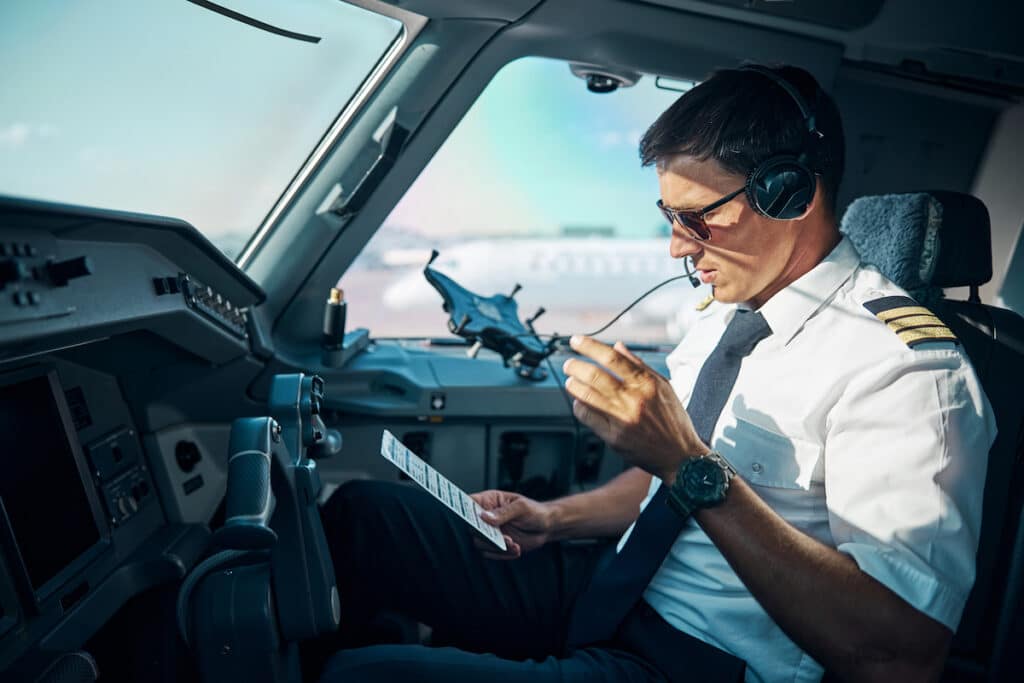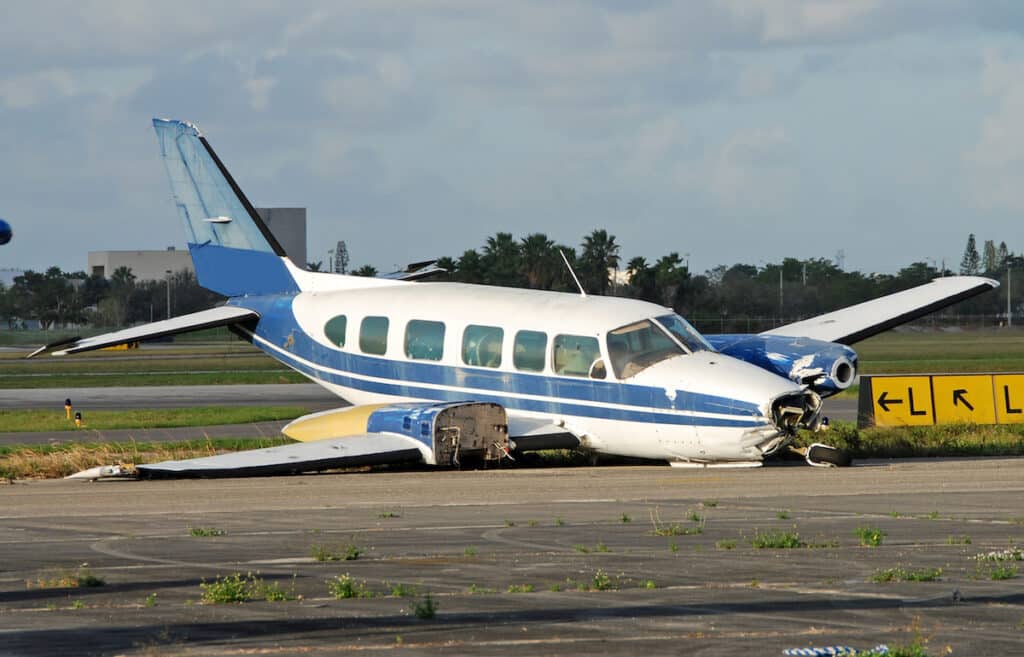However, as the sector expands, so do the complexities that come with it. One such thorny issue currently threatening the industry is the practice of illegal chartering. Operating like shadows on the fringe of regulations, these unlawful operations present many known and unforeseen risks to passengers, crew, and aircraft owners.
Illegal chartering not only compromises safety and violates regulations but also casts a negative light on the entire charter industry. Despite the high standards maintained by legitimate operators, the actions of a few unscrupulous entities can paint an unfair picture of risk and unreliability. In the face of these challenges, it becomes crucial for all stakeholders to understand the intricacies of chartering, its regulations, and the risks associated with illegal charter operations. This post aims to shed light on these issues, providing a roadmap for navigating the sometimes nebulous world of charter flights.
Decoding Chartering: Basic Definitions
Before we delve into the heart of the matter, let’s familiarize ourselves with some fundamental terminologies and concepts crucial to understanding the chartering landscape.
Air Operator Certificate (AOC)
At the top of the list is the Air Operator Certificate (AOC) and the operating permit. An AOC is a certificate issued by a country’s civil aviation authority. It is the green light that officially authorizes an aircraft operator to carry out specific commercial air transport operations. The AOC serves as proof that the operator has the personnel, assets, and systems in place to ensure the safety of its operations.
Commercial vs. Private Chartering: The Regulatory Divide
Discerning between legal and illegal chartering can be challenging. The crux of the distinction lies in understanding the difference between commercial and private chartering and the regulatory framework governing each.
For instance, in a private chartering scenario, let’s consider a business jet owner who lends their aircraft for chartering in a non-commercial setting. Despite appearances, this arrangement falls under illegal chartering, given that the owner is not licensed to operate commercial flights.
To complicate matters further, consider a case where a pilot operates a Pilatus PC-12 to transport passengers. Given that the PC-12, a single-turboprop aircraft, is technically less complex, the flight can be conducted under non-commercial flight rules as per Article 6 of Regulation 965/2012. However, this arrangement comes with certain conditions. It stipulates that all occupants, including the pilot, must share the direct costs of the flight, and the number of people sharing these costs is limited to six. If the pilot doesn’t share in the costs, this flight could potentially be considered an illegal charter operation. Without this cost-sharing arrangement, the PC-12 would need to be registered for commercial operation.
However, European regulations do not explicitly define terms such as “remuneration” or “other valuable consideration,” leading to differing interpretations among member states. In some countries, even a minor payment can be seen as remuneration, while others interpret it as the profit generated by the pilot or operator after covering the actual costs of the flight – encompassing aircraft rental, fuel, and landing fees. This ambiguity further blurs the line between commercial and private chartering, underscoring the need for clear, uniform regulations.
The Players Behind the Scenes
Behind each charter flight is an intricate web of roles and responsibilities, all of which play a part in its successful execution. Key roles include the pilot, who is responsible for flying the aircraft; the flight operations manager, who oversees the logistical aspects of the flight; and the aircraft owner, who holds the ultimate ownership and certain responsibilities for the aircraft.
Crucially, these roles intertwine with the concept of ‘operational control’. Operational control refers to who has the authority to initiate, conduct, or terminate a flight. This is an essential aspect of aviation regulations, and understanding it can often be the key to distinguishing legal from illegal charter operations.
In the upcoming sections, we’ll delve deeper into the nuances of these roles and the grey areas that create a breeding ground for illegal chartering.

The Grey Area: Legal vs. Illegal Chartering
As we navigate the complex realm of chartering, it is essential to understand what distinguishes a legal charter from an illegal one. The differences can sometimes seem slight, but they have significant implications for all parties involved.
Identifying Illegal Chartering: The Telltale Signs
Illegal chartering, often referred to as “grey chartering,” typically involves private aircraft owners or operators carrying out commercial flights without the necessary Air Operator’s Certificate (AOC). This is often done under the guise of a private flight to evade the stringent regulations and oversight applicable to commercial operations.
Consider this scenario: A private jet owner might lend their aircraft to an acquaintance for a flight in return for a “favor” or “gift.” On the surface, this might seem like a private arrangement, but in reality, it could be considered a commercial operation if the owner gains a benefit from it. This would constitute an illegal charter, as the aircraft owner does not hold an AOC.
Another example might involve a business using its corporate jet to fly other companies’ employees or clients, receiving compensation in return. Without an AOC, this is another form of illegal chartering.
The Ambiguity of “Remuneration” and “Other Valuable Consideration”
One of the significant challenges in regulating and combating illegal chartering comes from the ambiguity in interpreting the terms “remuneration” and “other valuable consideration.” These terms, key to distinguishing between private and commercial flights, are open to interpretation and can vary from one jurisdiction to another.
In the context of European regulations, “remuneration” typically refers to direct payment for a flight. Still, the term “other valuable consideration” is more nebulous, potentially encompassing indirect benefits, such as barter arrangements, business favors, or other types of in-kind payment.
Different countries within Europe may interpret these terms differently, leading to a lack of uniformity in regulations and enforcement. Some may take a strict view, considering any form of indirect benefit as remuneration, while others might adopt a more lenient interpretation.
This ambiguity creates a fertile ground for illegal chartering, as unscrupulous operators may exploit these grey areas to conduct commercial operations without the necessary permissions. As we move forward, it is clear that these ambiguities need to be addressed to ensure the safety and integrity of the charter industry.

The Urgent Need for More Robust Regulatory Measures
Ensuring the integrity and safety of the charter industry is no easy feat. As the sector expands, so too does the imperative for comprehensive and effective oversight. Here’s where aviation authorities play a critical role, yet there is still much work to be done.
The Role of Aviation Authorities: Fighting the Good Fight
The role of regulatory authorities, such as the Federal Aviation Administration (FAA) in the United States or the European Union Aviation Safety Agency (EASA) in Europe, is paramount in combatting illegal charter operations. They are responsible for issuing and overseeing Air Operator Certificates (AOC), as well as enforcing regulations around aircraft chartering.
However, the struggle against illegal chartering is an uphill battle. With the diversity of operations and the complexity of distinguishing between legal and illegal activities, these authorities need to be proactive, vigilant, and armed with comprehensive and clear-cut regulations.
Despite the measures in place, the clandestine nature of illegal chartering often makes it difficult for authorities to uncover and penalize these operations effectively. This calls for more stringent measures, such as enhanced surveillance and reporting mechanisms, increased penalties, and tighter regulatory scrutiny.
The Disparity in Penalties: The Need for Uniformity
One critical issue is the disparity in the penalties for illegal charter operations across different jurisdictions. The severity and nature of the penalties can vary greatly from country to country, which complicates enforcement efforts and can even create loopholes that illegal operators exploit.
For instance, in some jurisdictions, the penalties for illegal chartering are so light that they do little to deter such activities. In contrast, other countries impose hefty fines or even imprisonment. This lack of uniformity in penalties weakens the overall effort to combat illegal charters and undermines the integrity of the aviation industry.
Therefore, there is a pressing need for greater uniformity in the penalties for illegal charter operations. This would not only discourage operators from engaging in such activities but also enhance cooperation and information sharing between different jurisdictions.
Proactive Measures: Lessons from the US
The United States, through the Federal Aviation Administration, has been particularly proactive in addressing the issue of illegal chartering. The FAA has ramped up its surveillance activities and increased penalties for offenders significantly. It has also launched educational campaigns to inform operators, passengers, and the public about the risks and signs of illegal chartering.
Such proactive measures have proven effective, leading to a decline in illegal charter activities and an overall improvement in aviation safety in the US. Europe, and indeed other regions, could benefit from adopting similar measures. Such an approach would go a long way in ensuring that the chartering industry is safe, reliable, and accountable.

Navigating the Chartering Landscape: A Guide to Safer Skies
While aviation authorities have a significant role in mitigating illegal chartering, other industry stakeholders, from passengers to charter brokers, pilots, and operators, can also contribute to curbing these illicit operations. Here are some proactive measures you can take to ensure the legality and safety of your charter flights.
For Passengers: Asking the Right Questions
As a passenger, the allure of charter flights can be considerable, but it’s crucial to ensure you’re choosing a legal and safe operator. Before booking your flight, ask the following questions to confirm the operator’s legitimacy:
- Do they have an Air Operator Certificate (AOC)? – An AOC is the stamp of approval that an operator meets the safety standards set by the aviation authority. Don’t hesitate to ask for a copy or the number, which you can verify online with the issuing authority.
- Who exercises operational control? – The entity or person in operational control is the one responsible for the flight’s safety. Ensure it’s not outsourced to a third party.
- Can they provide the names of their pilots and their qualifications? – It’s perfectly reasonable to ask for information about the flight crew’s experience and qualifications. Legitimate operators will have no issues sharing this.
- Are they transparent about costs? – Legal operators will provide an all-inclusive quote. Be wary of operators who add unexpected costs or who are vague about their pricing.
For Industry Stakeholders: Steps Towards Responsible Chartering
For aircraft owners, pilots, commercial operators, brokers, and insurers, ensuring you’re not unknowingly participating in illegal charter operations requires due diligence. Here are some tips to ensure your operations stay on the right side of the law:
- Verify AOC status: Always verify the AOC status of the operators you work with, ensuring they have the necessary permissions for the type of flights they are conducting.
- Know your role: Understand your role in the operation and who has operational control. Each stakeholder in an aviation operation has specific legal and regulatory responsibilities.
- Education and training: Keep abreast of the latest regulations and industry practices. Regular training can help you spot illegal activities and understand the proper channels for reporting.
- Due diligence in business relationships: Whether you’re an insurer offering coverage or a broker connecting passengers with operators, be cautious in your business relationships. Understand the operations of the entities you’re dealing with, ask questions, and report suspicious activities.
Everyone has a role to play in ensuring the chartering industry is safe, secure, and free from illegal activities. Next, we will look at case studies of illegal charters to understand their consequences better.

Lessons from the Past: The High Cost of Illegal Charters
To better understand the severe consequences of illegal chartering, let’s examine two real-world instances that underscore the need for stringent regulations and proactive measures in chartering.
Tragic Missteps: The Emiliano Sala Incident
On a cold evening of January 21, 2019, the world watched in shock as news of an ill-fated Piper PA-46 Malibu aircraft emerged. The lone passenger, Emiliano Sala, a newly signed football player for Cardiff City, tragically never made it across the English Channel from France to Wales.
The details unveiled in the subsequent trial at Cardiff Crown Court revealed a grim picture of negligence. The Piper Malibu, registered in the US, was unlicensed for commercial passenger transportation. Shockingly, despite knowing that the pilot lacked proper qualifications, the operator hired him. It was established that the 59-year-old pilot flew with an FAA license for private pilots, based on his EASA PPL, with expired SEP privileges. Unfortunately, he held no qualifications for night or instrument flights.
For this supposed commercial flight, the operator was to pay him a fee, but the absence of an Air Operator’s Certificate (AOC) turned it into an illegal charter operation. The operator was accused of running an “incompetent, undocumented, risky, and dishonest” organization, leading to this heartbreaking loss. Investigators attributed the crash to a loss of control, exacerbated by the pilot’s desperate attempt to maintain visual flight conditions.
Close Call: The Courchevel Landing Accident
Less than a month after the Sala tragedy, another incident involving a Piper PA-46 occurred. On February 8, 2019, a pilot, accompanied by a safety pilot, set off on an IFR flight plan from Toussus-Le-Noble to the high-altitude airport of Courchevel in France.
The purpose of this flight was to transport three business travelers, arranged through an internet platform aiming to connect pilots, aircraft owners, and passengers. The operator, BigBlank, was a subsidiary of the Air France-KLM Group. However, no Air Operator’s Certificate (AOC) was in place for these flights, making them private by default.
Despite the pilot holding a commercial pilot’s license with instrument flight authorization, his lack of experience at the high-altitude airport and limited training on the Piper PA-46 led to a delayed landing. Consequently, the aircraft collided with a snow pile, resulting in significant damage but, fortunately, no injuries.
The billing procedure further complicated matters. Both the pilot’s fee and charter costs should have been billed separately by the pilot and the aircraft owner, respectively. However, BigBlank issued a combined bill, resulting in a misunderstanding that Air France/KLM was conducting the flight. The French air accident investigation agency (BEA) criticized not only the pilot’s limited experience but also the inadequate structure of BigBlank to meet commercial air traffic requirements.
These two accidents highlight the risks associated with illegal chartering — not just for the passengers but also for the pilots and the broader aviation community. They underline the importance of understanding regulations and conducting comprehensive checks to ensure that all charter flights comply with legal requirements.

Conclusion: Chartering with Confidence
The world of charter flights, both private and commercial, can be complex and filled with uncertainty for passengers and operators alike. The regulations governing these flights are far from straightforward, and the risk posed by illegal charter operations is significant. Understanding these regulations and being aware of the potential dangers is crucial for all stakeholders.
The risks associated with illegal charter flights extend beyond the legal repercussions; they hold the potential to endanger lives, as seen in the heartbreaking cases of the Emiliano Sala tragedy and the Courchevel landing accident.
All parties involved, from passengers to pilots, operators, and even aviation authorities, must assume their responsibility in this matter. Any suspicion of illegal charter operations should be reported. A collaborative approach is critical to preserving the industry’s integrity and its participants’ safety.
We urge everyone involved in charter flights to stay informed and make educated decisions. For passengers, this might mean asking the right questions before booking a flight. For operators, this could entail ensuring that their operations meet all the required standards.
AeroEx: Your Partner in Safe and Compliant Chartering
Navigating the chartering landscape can be difficult, but you don’t have to do it alone. AeroEx is here to assist in ensuring your operations are safe and within the boundaries of aviation laws. We offer independent audits and assessments conducted by experts well-versed in aviation rules and regulations. We meticulously evaluate operators to provide the reassurance you need when chartering flights.
At AeroEx, we are committed to making charter flights safer and more transparent for all involved. We offer a wide range of services to help you navigate the complexities of the aviation industry. Stay informed, make educated decisions, and always choose safety first. Happy chartering!


